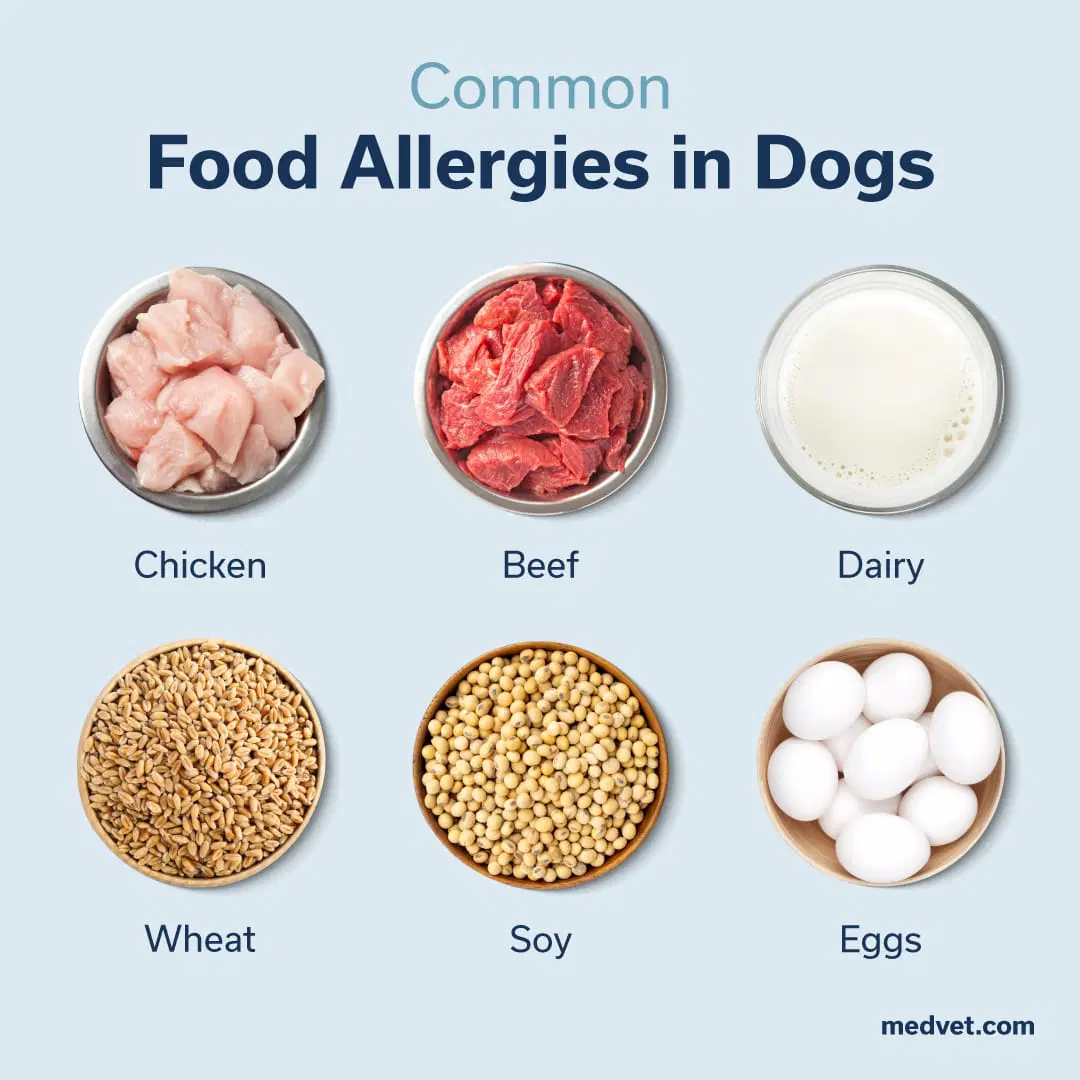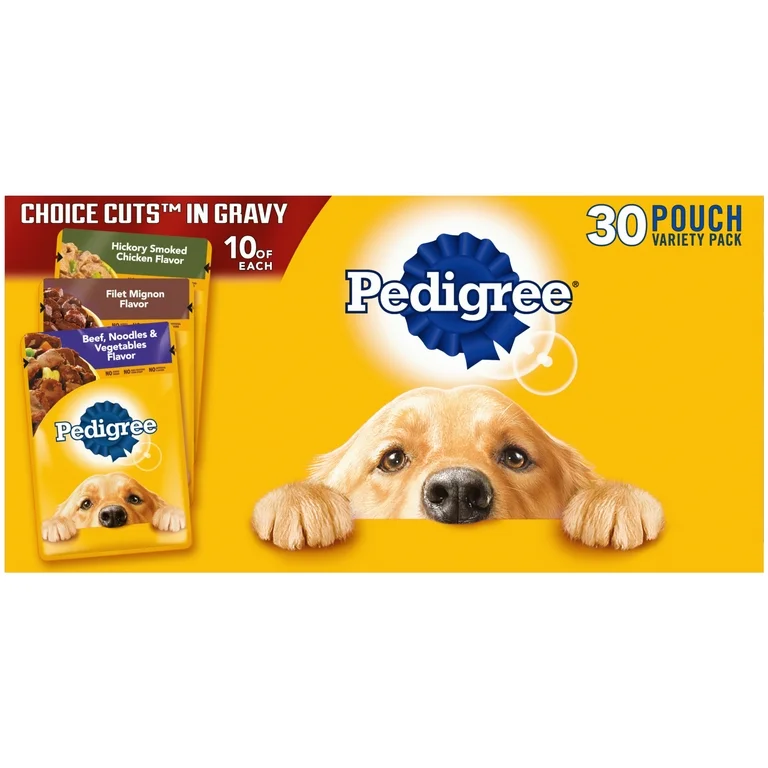Table of Contents
Dogs, like humans, can suffer from food allergies that cause discomfort and health problems. If your dog experiences itching, skin issues, or digestive problems, a food allergy might be the cause.
Understanding the triggers, symptoms, and best diet options can help keep your furry friend happy and healthy.
In this guide, we’ll explore what food allergies in dogs are, their causes, symptoms, and the best ways to manage them.
What Are Food Allergies in Dogs?
A food allergy occurs when a dog’s immune system mistakenly identifies certain ingredients as harmful. When consumed, these ingredients trigger an overactive immune response, leading to itching, skin irritation, ear infections, or digestive issues.
Food allergies should not be confused with food intolerances. While allergies involve the immune system, intolerances are digestive problems that result in vomiting, bloating, or diarrhea but do not cause an immune reaction.
Common Causes of Food Allergies in Dogs
Certain foods are more likely to trigger allergic reactions in dogs. The most common allergens include:
1. Proteins
- Chicken
- Beef
- Lamb
- Fish
- Dairy (milk, cheese, yogurt)
2. Grains and Carbohydrates
- Wheat
- Corn
- Soy
3. Additives and Fillers
- Artificial flavors and preservatives
- Dyes and food colorings
- Low-quality by-products
Dogs often develop allergies to foods they’ve been eating for a long time, not just new ingredients.
Symptoms of Food Allergies in Dogs
The signs of food allergies can vary but commonly include:
Skin-Related Symptoms
✅ Itchy skin (especially around the face, paws, and belly)
✅ Red or inflamed skin
✅ Chronic ear infections
✅ Hair loss or excessive shedding
✅ Hives or rashes
Digestive Symptoms
✅ Chronic diarrhea
✅ Vomiting
✅ Flatulence (excessive gas)
✅ Frequent bowel movements
Behavioral Symptoms
✅ Excessive licking or chewing paws
✅ Restlessness due to discomfort
✅ Loss of appetite
If your dog shows any of these symptoms, consult a veterinarian for diagnosis and treatment.
How to Diagnose Food Allergies in Dogs
1. Elimination Diet
The most effective way to diagnose food allergies is through an elimination diet. This involves:
- Feeding your dog a limited-ingredient diet (LID) with a novel protein and carbohydrate source (such as venison and sweet potato).
- Eliminating all treats, table scraps, and flavored medications.
- Gradually reintroducing ingredients one at a time to identify the allergen.
2. Veterinary Allergy Testing
While not always 100% accurate, blood tests or skin tests can help determine food allergies.
Best Diets for Dogs with Food Allergies
Once you identify your dog’s allergens, switching to a suitable diet is essential. Here are the best types of food for dogs with allergies:
1. Limited-Ingredient Diets (LID)
LID dog foods contain fewer ingredients to minimize the risk of allergic reactions. They often use a single protein source and a single carbohydrate source.
2. Novel Protein Diets
If your dog is allergic to common proteins, try novel protein sources such as:
- Venison
- Duck
- Rabbit
- Kangaroo
3. Hydrolyzed Protein Diets
These foods contain proteins broken down into smaller components, making them less likely to trigger allergies. Vets often recommend hydrolyzed protein diets for severe cases.
4. Grain-Free Diets
If your dog is allergic to grains like wheat or corn, a grain-free diet with sweet potatoes, lentils, or peas can be a good alternative.
Top 3 Dog Foods for Food Allergies
1. Hill’s Prescription Diet d/d
Overview: This vet-recommended formula is designed for dogs with food allergies, using novel proteins and grain-free ingredients.
Pros:
✅ Contains hydrolyzed proteins for better digestion
✅ No artificial preservatives or fillers
✅ Helps improve skin and coat health
Cons:
❌ Requires a prescription from a veterinarian
❌ More expensive than regular dog food
2. Blue Buffalo Basics Limited Ingredient Diet
Overview: A great choice for dogs needing a simple, high-quality diet with minimal ingredients.
Pros:
✅ Real turkey or salmon as the main protein
✅ No corn, wheat, soy, or dairy
✅ Includes omega-3 and omega-6 fatty acids for skin health
Cons:
❌ Some dogs may not like the taste
❌ Slightly more expensive than regular brands
3. Natural Balance L.I.D. Limited Ingredient Diets
Overview: A well-balanced option with a single protein source and limited carbohydrates.
Pros:
✅ Free from artificial additives and fillers
✅ Uses sweet potatoes for easy digestion
✅ Multiple protein options (duck, venison, fish)
Cons:
❌ Some dogs may take time to adjust to the formula
❌ Not always available in smaller pet stores
Pros and Cons of Feeding an Allergy-Specific Diet
Pros:
✅ Reduces itching, digestive issues, and skin conditions
✅ Helps maintain a healthy coat and skin
✅ Supports better digestion and nutrient absorption
✅ Improves energy levels and overall well-being
Cons:
❌ Can be more expensive than regular dog food
❌ Some dogs may take time to adjust to new flavors
❌ Requires strict ingredient control (no table scraps or unapproved treats)
Tips for Managing Food Allergies in Dogs
✅ Stick to a Consistent Diet: Once you find a food that works, avoid switching unnecessarily.
✅ Read Labels Carefully: Always check for hidden allergens in ingredients.
✅ Avoid Treats with Allergens: Even a small amount of an allergen can trigger a reaction.
✅ Consult a Vet: If symptoms persist, your vet may recommend antihistamines, supplements, or prescription diets.
Final Thoughts
Food allergies in dogs can be frustrating, but with the right diet and management, your pup can live a happy and healthy life. The best way to tackle allergies is through an elimination diet, high-quality hypoallergenic dog food, and veterinary guidance.
If you suspect your dog has a food allergy, consider switching to a limited-ingredient or hydrolyzed protein diet and monitor their response. Your furry friend deserves a diet that keeps them feeling their best!







